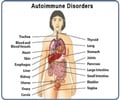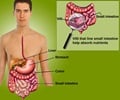Celiac disease, an immune system reaction to gluten in the diet, is over four times more common today than it was 50 years ago
A Mayo Clinic study published this month in the journal Gastroenterology says that celiac disease, an immune system reaction to gluten in the diet, is over four times more common today than it was 50 years ago.
The study also found that subjects who did not know they had celiac disease were nearly four times more likely than celiac-free subjects to have died during the 45 years of follow-up."Celiac disease has become much more common in the last 50 years, and we don't know why," says Joseph Murray, M.D., the Mayo Clinic gastroenterologist who led the study. "It now affects about one in a hundred people. We also have shown that undiagnosed or 'silent' celiac disease may have a significant impact on survival. The increasing prevalence, combined with the mortality impact, suggests celiac disease could be a significant public health issue."
In patients with celiac disease, the presence of a protein called gluten from wheat, barley or rye triggers an immune system attack, damaging the villi in the small intestine. Villi are fingerlike projections that increase the intestine's surface area for nutrient absorption. Celiac disease symptoms may include diarrhea, abdominal discomfort, weight loss, anemia, unexplained infertility, loss of teeth or even premature or severe osteoporosis.
The Mayo Clinic research team tested blood samples gathered at Warren Air Force Base (AFB) in Wyoming between 1948 and 1954 for the antibody that people with celiac disease produce in reaction to gluten. They compared those blood test results with those from two recently collected sets from Olmsted County, Minn. One matched the ages of those from the 1948� testing at the time of the blood draw, and the other matched their birth years. Researchers found that young people today are 4.5 times more likely to have celiac disease than young people were in the 1950s, while those whose birth years matched the Warren AFB participants were four times more likely to have celiac disease.
"Celiac disease is unusual, but it's no longer rare," says Dr. Murray. "Something has changed in our environment to make it much more common. Until recently, the standard approach to finding celiac disease has been to wait for people to complain of symptoms and to come to the doctor for investigation. This study suggests that we may need to consider looking for celiac disease in the general population, more like we do in testing for cholesterol or blood pressure."
Dr. Murray says the study findings highlight the need for increased awareness of celiac disease, both among physicians and patients. "Part of the problem is that celiac disease symptoms are variable and can be mistaken for other diseases that are more common, such as irritable bowel syndrome," he says. "Some studies have suggested that for every person who has been diagnosed with celiac disease, there are likely 30 who have it but are not diagnosed. And given the nearly quadrupled mortality risk for silent celiac disease we have shown in our study, getting more patients and health professionals to consider the possibility of celiac disease is important."
Advertisement
Source-Eurekalert
RAS









